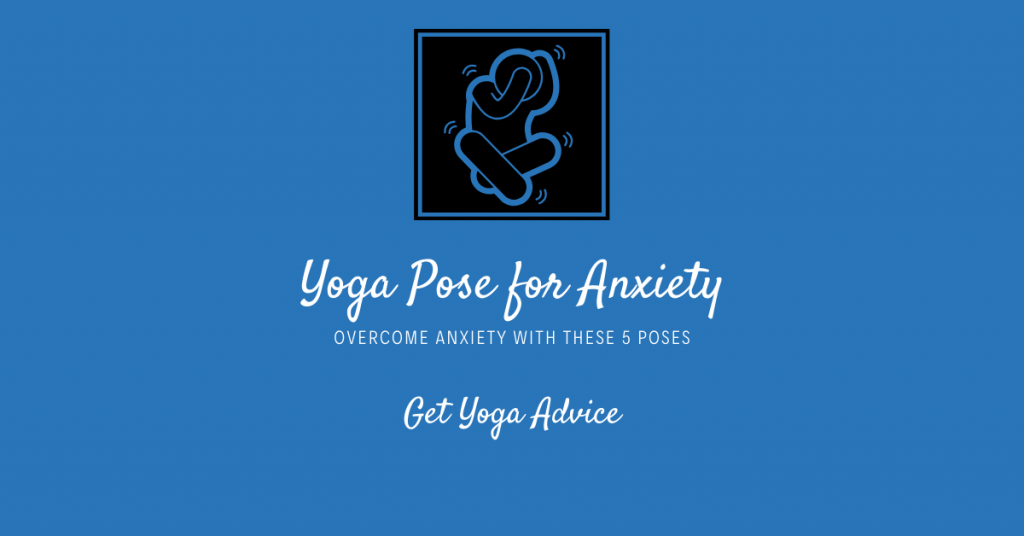Anxiety tends to be overwhelming for many, whether it’s a passing feeling, a tendency to worry or an acute anxiety disorder. Anxiety caused by not having control of life or a situation, poor self-esteem, fear, worry, panic or feeling defeated can be life-altering for some.
Practicing a yoga pose to reduce anxiety can bring significant improvement. It can slow feelings of anxiety and restore mental peace.
To practice a yoga pose to combat anxiety, you do not need to join a studio. Yoga is not about high-end athletic wear or a special class. You need only a little space, knowledge of the poses you are going to use and the desire to create a routine. Here are five poses you can practice to overcome anxiety.
Contents
1. Child’s Pose (Balasana)
Child’s pose is a relaxing position that lets a person rest and rejuvenate. It is comforting when overcoming anxiety. Child’s pose reduces tension in the back, neck and shoulders and encourages relaxation using conscious deep breathing.
This works well for those who suffer from anxiety, as the pose calms the sympathetic nervous system and stimulates the parasympathetic nervous system.
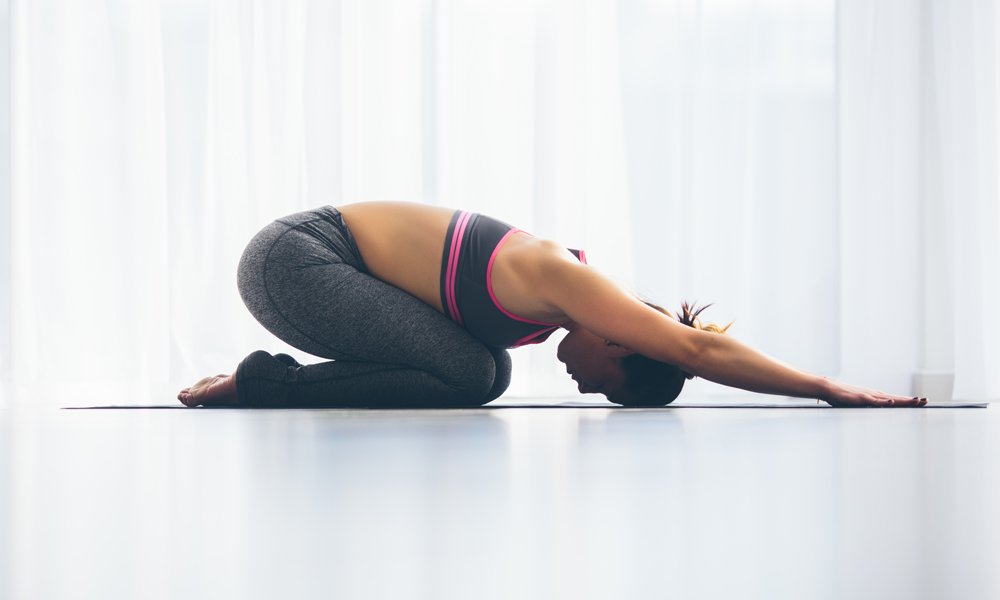
- Start on your hands and knees, keeping your feet together and big toes touching.
- Set your hands right under your arms, and keep legs apart and aligned with your hips.
- Exhale as you bend forward so your core rests on your thighs and your forehead touches the mat.
- Extend your arms out in front and set your sitting bones onto your heels.
- Hold for as long as you like and are comfortable.
- Use your hands to push your core back up when you are finished practicing the pose.
2. Tree Pose (Vrikasana)
Tree pose is key to helping dissipate some anxiety symptoms. This basic standing balance pose encourages concentration, focus and being aware of the body as a whole.
The Tree pose moves the mind from anxious thought to focusing on the physical sense of being. It not only helps with anxiety but can aid in reducing stress if you must stand for long periods of time. The Tree pose can be a good distraction from things that will trigger anxiety.
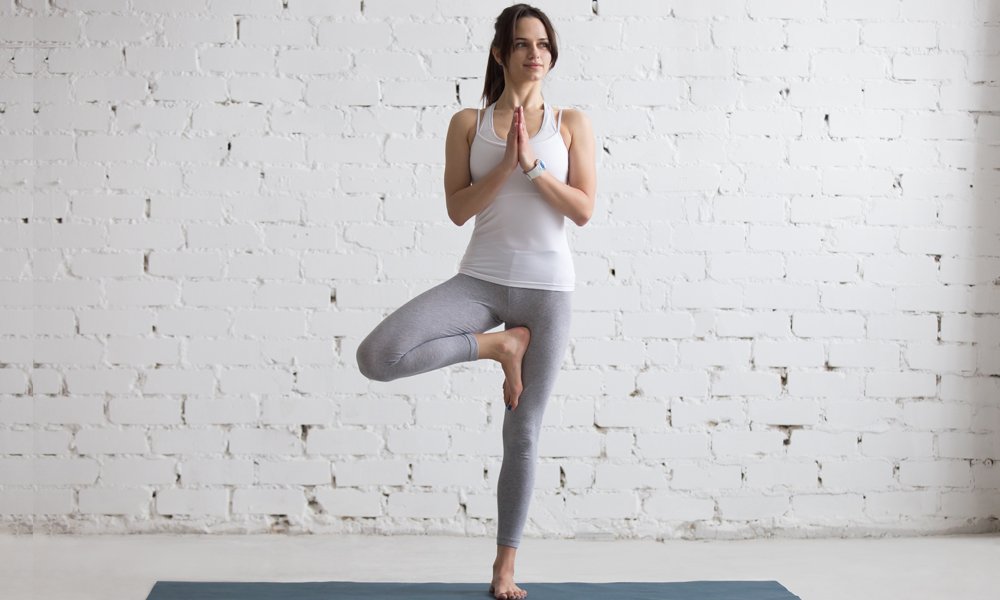
- Stand straight with your feet planted at hip-width.
- Shift your body weight to the right leg.
- Bend the left knee and draw the sole of the foot to the inner part of the right thigh. Alternatively, you can bring the foot just below the knee.
- If it helps, focus on a specific spot on the wall to maintain your balance.
- Keep toes pointed to the floor.
- Make sure your pelvis is centered over the foot on the floor, then press the sole of your left foot into the inner thigh and resist with the outer part of the right thigh.
- Once you are balanced, hold your hands in a prayer position with thumbs pointed at your heart.
- Lift your gaze either up at the ceiling or forward. Hold for 2-to-3 deep breaths and repeat on the other leg.
3. Warrior III (Virabhadrasana III)
After you have mastered the basic Tree pose you can move to the Warrior III pose. It will challenge you, as it offers the ability to work on building up the strength in your core while improving balance, posture and coordination.
This yoga pose stimulates the core and helps digestion. The Warrior III pose will challenge you mentally and physically in a calming way and helps direct your thinking away from anxious thoughts and behaviors.
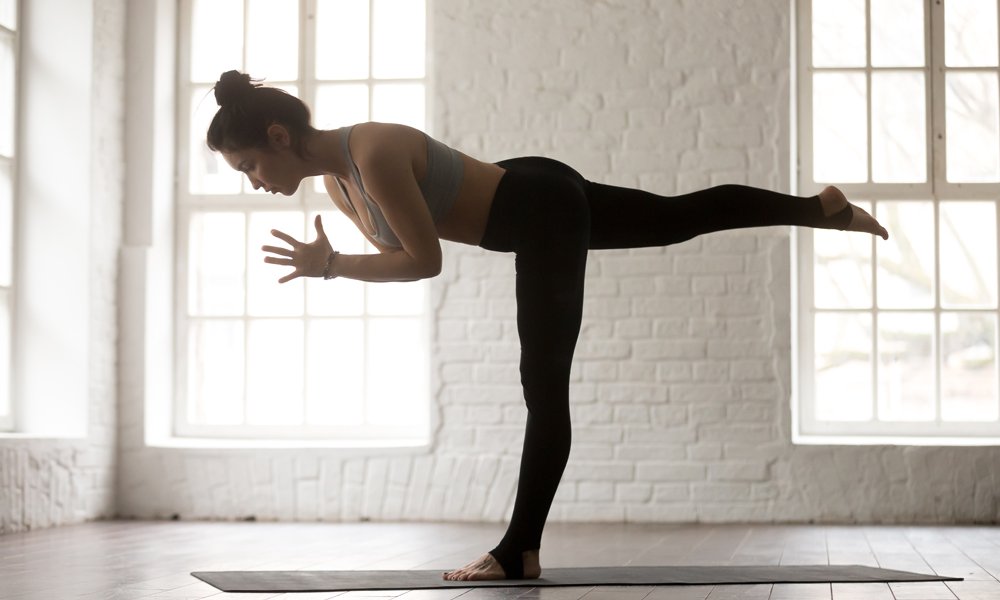
- Place your feet beneath your hips and pivot to the left, widening your stance to about 4 feet apart.
- Then turn your right foot 90 degrees so it points to the front of the mat.
- Turn your left foot about 45 degrees, angling it to the upper left part of the mat.
- Line up your pelvis and torso with the right foot, then bend your right knee while keeping your feet planted. Raise both arms slightly over your head and press your bodyweight into the right foot while lifting the left leg. Your torso will tilt forward at the same time until your body is parallel to the floor.
- Reach forward with your arms.
- Keep your right leg straight and look to the ground a few feet in front of you. Hold the pose for 2-to-3 deep breaths then repeat on the other side.
4. Headstand (Sirsasana)
This pose is a little trickier but helps reduce anxiety and your stress response. The headstand changes the blood flow in your body, so you are focused on breath, not anxiety. You need to mind your body’s placement and breathing.
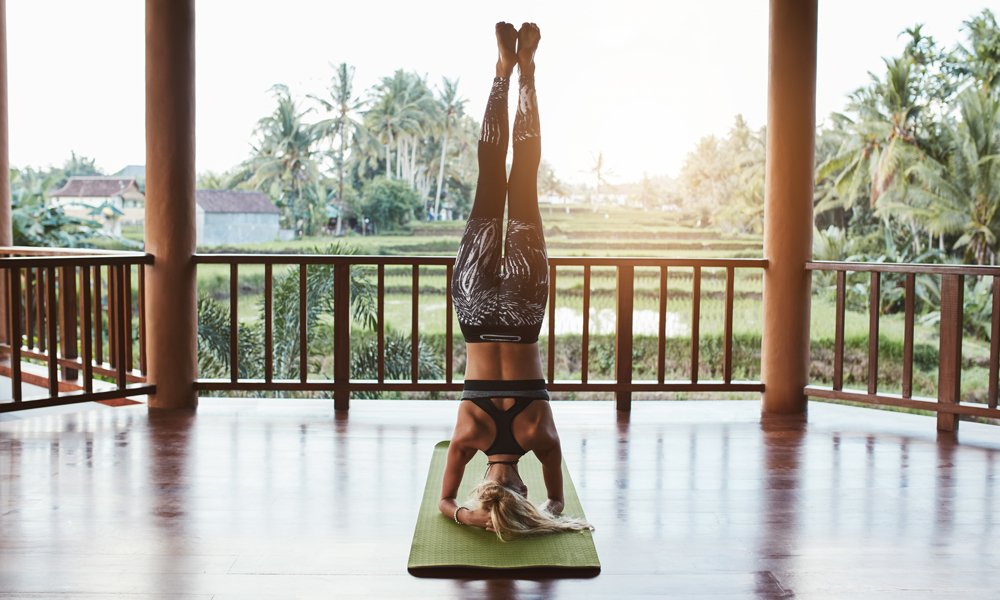
You can use a wall for support if you are learning the pose.
- Start on your hands and knees with forearms at the same width as the shoulders.
- Keep elbows in place, and interlock your figures.
- Put the top of your head on the floor.
- Lift your hips high while walking in close to the elbows. Use your abs and press your forearms down.
- Slowly lift a leg off the ground.
- Lift the other as you steady.
- Lift your feet over your shoulders and hips until you are straight.
- Hold for 5-to-6 deep breaths, then lower your legs and body and rest in Child’s pose for three breaths.
5. Legs Up the Wall Pose (Viparita Karani)
This is a well-known basic pose for easing anxiety. You can use a pillow if you need it for lower back pressure.
- Choose your left or right side to rest as close to a wall as you can.
- Place your legs on the wall and step them upwards, while keeping your shoulders and head on the mat.
- Your bottom and hamstrings should touch the wall.
- Close your eyes.
- Remain in this pose for five to ten minutes, breathing and relaxing.
Remember to breathe deeply with a regular rhythm while practicing this pose. The goal is to let blood from from your legs towards your heart and head.
Final Thoughts on The Best Yoga Pose for Anxiety
Yoga is a great practice if you suffer from anxiety. It will help you get out of your head and focus on stretching and physical practices. Plus, working up a sweat should work up some feel good endorphins. Bonus points if you practice yoga in a hot yoga studio.

